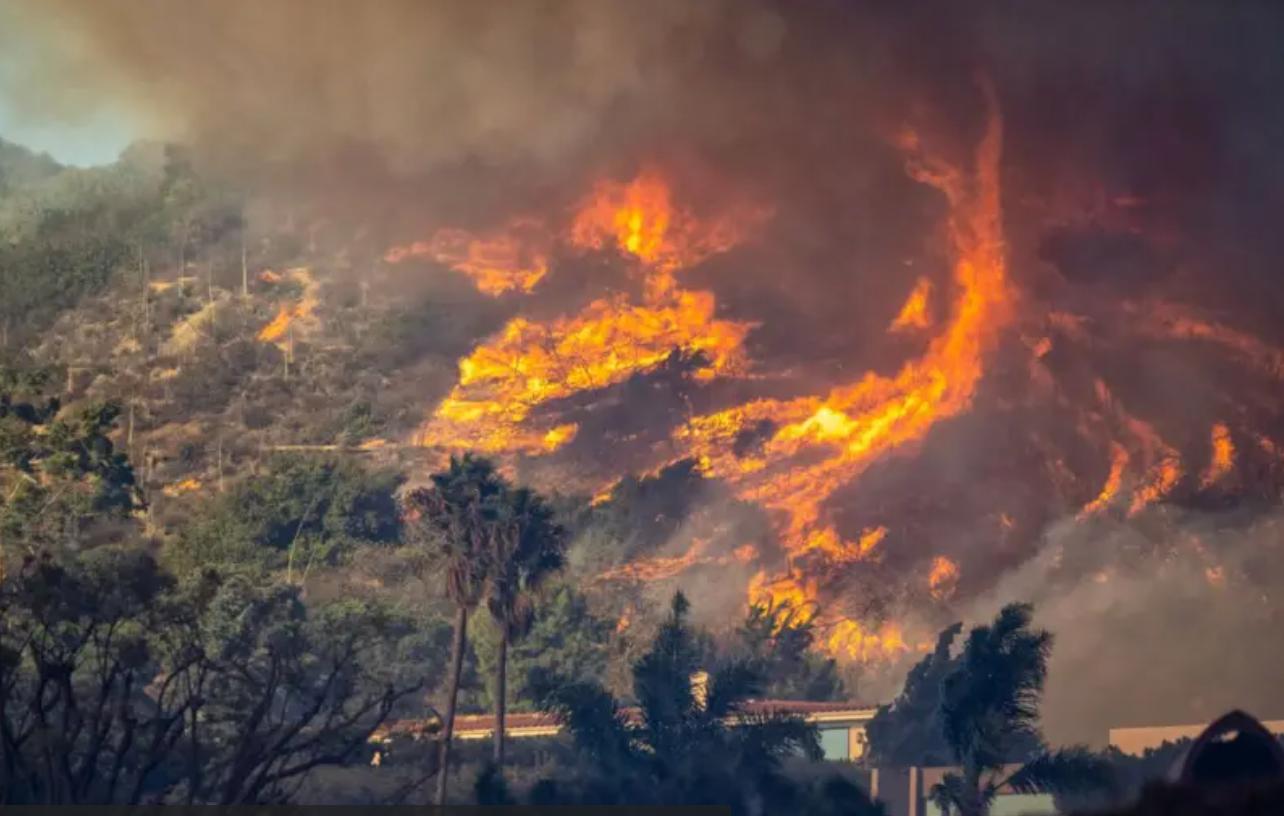
As of now, the four wildfires surrounding Los Angeles have burned an area of over 160 square kilometers, larger than the area of San Francisco. The latest data shows that the wildfires have caused 16 deaths and 16 people missing, and these figures are expected to increase as search and rescue operations continue. Currently, 150,000 residents in Los Angeles are in an evacuation state, with over 700 people staying in temporary shelters. These wildfires not only threaten the lives and property of local residents but also cause significant damage to the ecological environment. The difficulty in extinguishing the wildfires in Los Angeles is due to a variety of complex reasons, involving natural conditions, human factors, and social factors.
In terms of natural conditions, the terrain in the Los Angeles area is complex and diverse, with mountains, canyons, and forests interwoven. This provides a natural passage for the spread of fire. Once a wildfire breaks out, the fire will quickly spread along the ridges, valleys, and forests, forming multiple fire lines, making firefighting extremely difficult. In addition, the climate in the Los Angeles area is dry and rainy, especially in summer and autumn, when the vegetation is dry and flammable. Once exposed to a fire source, the fire will spread rapidly. Moreover, global warming in recent years has led to frequent extreme weather conditions, and the dry and hot weather conditions provide favorable conditions for the spread of wildfires. In particular, the "Santa Ana winds", which are dry and strong, are known for their speed and the ability to fan the flames. They are called "devil winds" by the locals. The wind not only scatters sparks but also quickly turns small flames into huge fire dragons.
In terms of human factors, the shortage of fire-fighting resources in the Los Angeles area is a significant reason. Due to financial constraints, the Los Angeles municipal government has cut over 17 million US dollars from the fire department's budget, leading to insufficient equipment and personnel shortages. When a fire breaks out, the fire department often struggles to quickly mobilize sufficient firefighting forces, making it difficult to effectively control the fire. Additionally, the fire infrastructure in some areas is outdated, with problems such as dry fire hydrants and waterless fire-fighting aircraft occurring frequently, further complicating the firefighting efforts. Moreover, there are loopholes in forest management, and outdoor fire use is not effectively controlled. Some residents' careless outdoor activities, such as barbecues and setting off fireworks, can easily cause fires.
Social factors also play a crucial role in the difficulty of extinguishing the wildfires in Los Angeles. Firstly, political divisions and partisan disputes have affected the allocation and coordination of rescue resources. During the wildfire outbreak, the political infighting between the two major parties in the United States has been ongoing. Republicans have accused the Democratic government of California of mismanagement, while Democrats have criticized the federal government for insufficient funding. Such partisan disputes not only distract the government's attention but also delay the allocation and coordination of rescue resources, making it difficult for the firefighting efforts to proceed smoothly. Secondly, the insufficiency of community planning and forest management policies has also exacerbated the spread of wildfires. In California, the coastal suburbs attract more and more people due to lower housing costs and higher safety levels, resulting in an increasing number of houses being built adjacent to or mixed with forests. This concentration of human-environment conflicts poses a significant risk. Once a wildfire occurs, human lives and livelihoods are easily threatened. At the same time, the insufficiency of forest management policies has led to excessive vegetation growth and dryness, providing favorable conditions for the spread of wildfires.
The wildfires in Los Angeles have not only caused casualties and property losses, but also inflicted severe damage on the ecological environment. The fires have burned down vast amounts of vegetation, disrupted the ecological balance, and affected biodiversity. Moreover, they have produced a large amount of smoke and harmful gases, seriously affecting air quality and threatening people's health.
The wildfires in Los Angeles have been raging for several days, with the death toll continuing to rise. According to the latest report from the fire department, approximately 12,000 houses have been destroyed in the wildfires in the Los Angeles area. In the particularly hard-hit Pacific Palisades area of Los Angeles, over 9,500 hectares of land have been burned. In the past few days, more than 180,000 people have been forced to leave their homes. This fire has had a huge impact on the lives of local residents, turning countless people's homes into scorched earth, including many who have worked hard all their lives and seen their life's savings vanish in an instant. It is hoped that the local government can quickly address issues such as water shortages and insufficient firefighters to minimize the losses.

The AI race in 2025 is playing out like an absurd drama: Jensen Huang, the head of Nvidia, the global computing power giant, is on one hand proclaiming that 'China will defeat the U.S. in the AI race,' while on the other hand pleading with the U.S. government, 'Stop building walls, the market is collapsing.'
The AI race in 2025 is playing out like an absurd drama: Je…
In the globalized trade system, the efficiency of ports as …
The Tokyo Metropolitan Police Department of Japan recently …
On December 9th local time, the Federal Reserve will hold i…
On December 8, 2025, Lancaster House in London hosted a piv…
The Chief of Staff of the Israel Defense Forces, Zamir, sai…